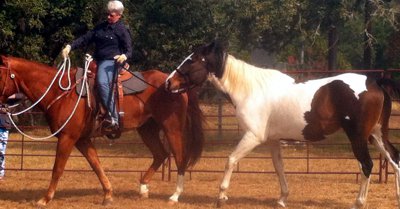Alternatives to Hay for Horses
It seems to me that hay has been in short supply for as long as I can remember. Whether because of drought, too much rain, or hurricanes which destroy the crops, here in Texas hay for horses is a precious resource! This shortage has caused many people to look for hay alternatives or ways to stretch short supplies. Ten years ago your only real choice was chopped alfalfa hay or hay cubes, but recently more options have become readily available. I review the most common options, along with the good and bad points of each, below.
Alfalfa Cubes
These are generally not as rich as alfalfa hay but they do have high levels of protein, energy, and calcium. This makes it hard to balance a ration, especially if you are feeding a senior feed that is high in protein or contains much beet pulp, which is calcium-rich. Alfalfa cubes that are not soaked may also cause horses to choke, but most horses with good teeth can eat these cubes without difficulty.
Chopped Alfalfa
This product usually has added molasses, which raises its energy and makes it unsuitable for horses with metabolic difficulties from sugar. In this form the hay is also consumed quickly and does not satisfy the horse’s need to chew. Chopped alfalfa can be added to other rations to increase the fiber consumed but is not suitable as a total hay replacement.
Ontario Timothy/Orchard Grass Balance Cubes
These cubes are made from hay that has been tested to be low in starch and sugar, with beet pulp and minerals added for balance. These cubes are well-accepted by most horses. These cubes are also smaller in size, which means they are less likely to cause choke. The protein level is around 9% so they are compatible with most senior feeds and can be soaked into a mash for older horses with bad teeth. These cubes are excellent for metabolic horses and can be used as the sole food source if no hay or pasture is available. Keep in mind, though, that horses may still chew trees or wood out of boredom if they have no hay at all. Spreading the cubes out over a large area will help slow the consumption rate, but may result in some sand intake. These cubes are low-fat so you will need to add some fat if your horse has equine polysaccharide storage myopathy.
Timothy/Orchard Grass Chopped Hay
This product also has some added molasses and is not routinely tested for starch and sugar levels but it makes a nice hay extender. The protein, calcium, and energy levels are lower than that of alfalfa cubes so it is much easier to balance in an overall ration. Triple Crown also has this product with an added mineral and vitamin pack to make it a balanced ration. This product can be used to supply the main source of nutrition when horses are on sparse pasture or limited hay.
Beet Pulp
Beet pulp is a byproduct of the sugar beet industry but in past months it has also been in short supply as more crop lands have been moved into corn production for ethanol. Beet pulp has a nice trace mineral profile and is low in starch, which makes it good for metabolic horses. It needs to be rinsed and soaked to remove dirt and excess molasses. It can be fed without soaking but this greatly increases the possibility of choke.
Wheat Bran
Many people have concerns about feeding bran because it is high in phosphorus but adult horses are not much affected because most commercial feed, hay, and pasture have plenty of calcium to bring the ratios back into balance. Wheat bran is high in fiber but also high in starch so it is not good for metabolic horses. It can be used to increase the fiber in the diet when hay or pasture is scarce. Most horses eat it very well, especially when it is made into a mash.
Many reputable feed companies have come out with high-fiber, low-energy feeds that can be used to make up all or most of the horses ration. These feeds are balanced but most horses will consume them quickly, which leaves them with way too much time with nothing to eat. Thus these balanced feeds should be used only in emergencies.
Hay for horses is expensive and even when it is available you want to minimize the waste. One option is to use a hay net, now available, with smaller mesh openings. Horses consume hay out of these nets more slowly and with less spillage or waste. Some people tie these nets with the strings secured and throw them on the ground or into low feeders so the horse can eat with the head low, which is a much more natural position. Others have used various methods to design hay feeders that prevent the hay from being dragged out onto the ground and trampled.
Remember that even though hay for horses is expensive as well as difficult to find and store, the concentrated portion of your horse’s diet should never make up more than half the overall ration. Feeding too much grain or other highly concentrated energy feeds will lead to colic, laminitis, or other serious ailments.
About the Author
Madalyn Ward, DVM, owns Bear Creek Veterinary Clinic in Austin, Texas. She is certified in Veterinary Homeopathy and Equine Osteopathy.
Memberships include American Veterinary Medical Association, American Association of Equine Practitioners, American Holistic Veterinary Medical Association, Texas Veterinary Medical Association and the Academy of Veterinary Homeopathy.
She has authored several books and publishes at her blog.
